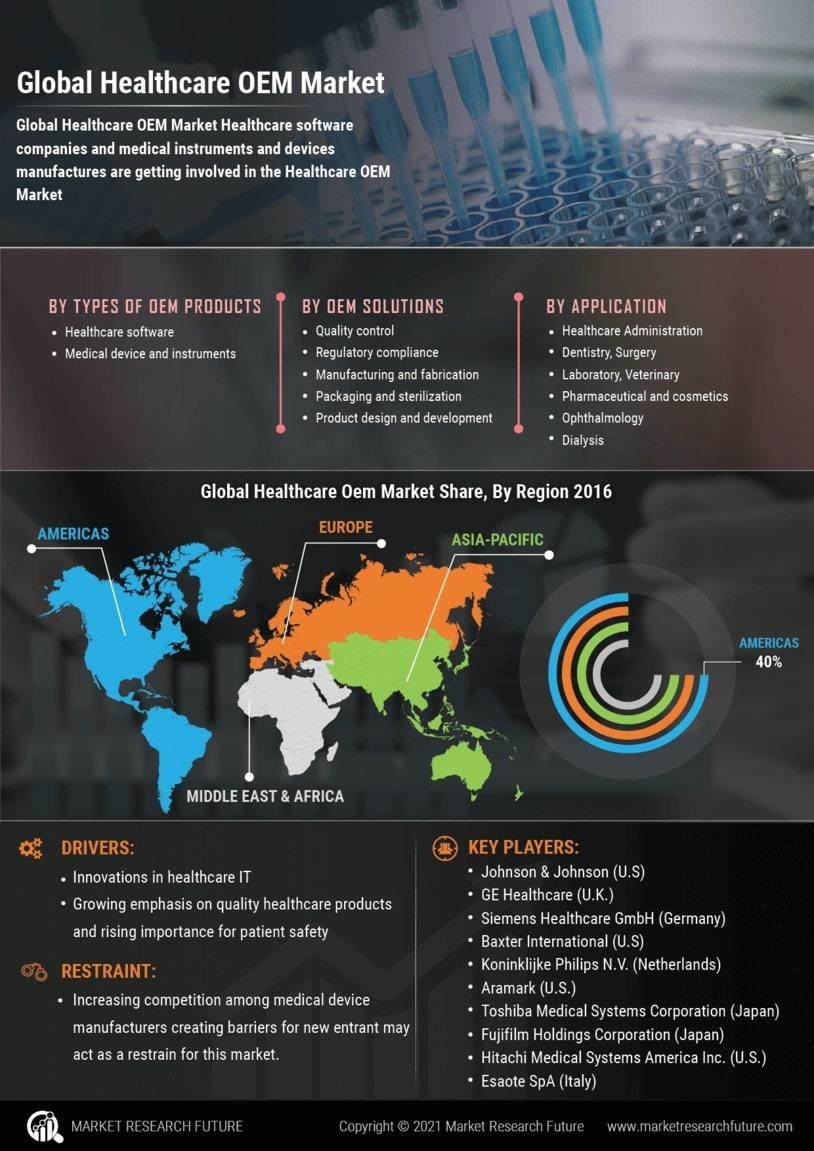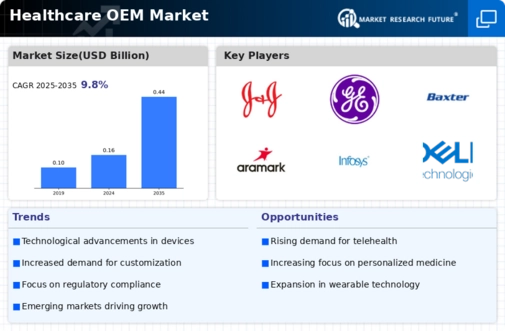Growth of Telehealth Services
The expansion of telehealth services is another critical driver for the Healthcare OEM Market. As healthcare providers increasingly adopt telemedicine solutions, there is a corresponding demand for medical devices that facilitate remote patient monitoring and virtual consultations. This trend has led to a surge in the development of connected devices, such as wearable health monitors and telehealth platforms. Market data suggests that the telehealth market is expected to reach a valuation of over 250 billion dollars by 2027, indicating a substantial opportunity for OEMs to innovate and supply devices that cater to this growing sector.
Increasing Regulatory Compliance Requirements
The Healthcare OEM Market is also shaped by the increasing regulatory compliance requirements imposed by health authorities. Stricter regulations regarding safety, efficacy, and quality of medical devices necessitate that OEMs invest in comprehensive quality management systems. This trend is particularly evident in regions where regulatory bodies are enhancing their oversight of medical device manufacturing processes. As a result, OEMs may incur higher operational costs to meet these compliance standards, which could impact pricing strategies. However, adherence to these regulations can also enhance brand reputation and consumer trust, ultimately benefiting the OEMs in the long run.
Technological Advancements in Medical Equipment
Technological advancements are significantly influencing the Healthcare OEM Market. The integration of cutting-edge technologies such as artificial intelligence, machine learning, and the Internet of Things is transforming the landscape of medical devices. These innovations enhance the functionality and efficiency of healthcare equipment, leading to improved patient outcomes. For instance, the adoption of AI in diagnostic tools has shown to increase accuracy rates by up to 30%. As these technologies continue to evolve, OEMs are likely to face pressure to incorporate them into their product lines, thereby driving growth and competitiveness in the market.
Focus on Cost-Effectiveness in Healthcare Delivery
Cost-effectiveness is becoming a pivotal concern within the Healthcare OEM Market. As healthcare systems worldwide strive to reduce expenditures while maintaining quality care, there is an increasing demand for cost-effective medical devices. OEMs are thus challenged to develop innovative solutions that not only meet clinical needs but also align with budgetary constraints faced by healthcare providers. This focus on cost-effectiveness is likely to drive competition among OEMs, pushing them to optimize manufacturing processes and explore alternative materials that can lower production costs without compromising quality.
Rising Demand for Personalized Healthcare Solutions
The Healthcare OEM Market is experiencing a notable shift towards personalized healthcare solutions. This trend is driven by an increasing consumer preference for tailored medical devices that cater to individual needs. As patients seek more customized treatment options, OEMs are compelled to innovate and develop devices that can be adapted to specific health conditions. According to recent data, the market for personalized medical devices is projected to grow at a compound annual growth rate of approximately 10% over the next five years. This growth indicates a robust demand for OEMs to invest in research and development to create devices that align with personalized healthcare trends.


















Leave a Comment